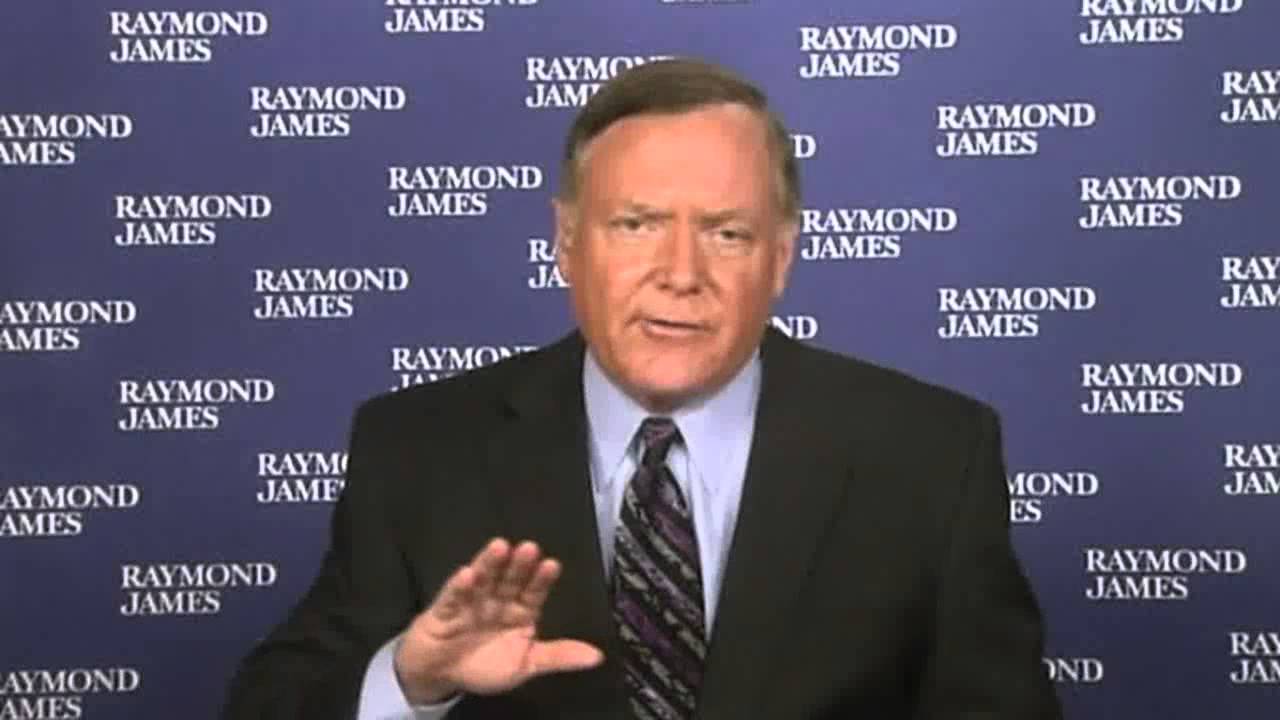by Jeffrey Saut, Chief Investment Strategist, Raymond James
“It’s what you learn after you know it all that counts.”
. . . Earl Weaver
Now is the time of year when strategists, economists, gurus, etc. all join in on the annual nonsense of predicting “What’s going to happen in the markets for 2017?” For many, this ritual is an ego trip, yet as Benjamin Graham inferred, forecasting where the markets will be a year from now is nothing more than rank speculation. Or, as we have noted, “You might as well flip a lucky penny.” Manifestly, while forecasting is fun, it should in no way be construed to be investment advice. That is why we try hard to avoid the annual guessing game and attempt to focus on what the markets are “saying,” what sectors look favorable, and what stocks we want to own in the new year. This year we have made an exception to that strategy, because our new friends at Alex Brown want a price target for the S&P 500 (SPX/2238.83) in 2017. In past missives, we have explained why our price target for 2017 is 2450. However, typically when “pressed” for a prediction, we tend to look at where the SPX is currently trading and state, “The average yearly return for the S&P 500 since 1926 has been ~10.4%, so we think it will be up 10.4% in the new year. Surprisingly, a 10.4% gain in 2017, from where the SPX currently resides, is very close to 2450 (2238 + 232=2470).
That said, lost in the “noise” of the annual soothsaying contest are some simple tenets of investing, with one of the best examples published in The Financial Analysts Journal in 1995. It was penned by Arthur Ziekel (at the time head of Merrill Lynch Asset Management) as a letter to his daughter on investing. To wit:
“Personal portfolio management is not a competitive sport. It is, instead, an important individualized effort to achieve some predetermined financial goal balancing one’s risk-tolerance level with the desire to enhance capital wealth. Good investment management practices are complex and time consuming, requiring discipline, patience, and consistency of application. Too many investors fail to follow some simple, time-tested tenets that improve the odds of achieving success and, at the same time, reduce the anxiety naturally associated with an uncertain undertaking.
I hope the following advice will help:
A fool and his money are soon parted.
Investment capital becomes a perishable commodity if not handled properly.
Be serious. Pay attention to your financial affairs. Take an active, intensive interest. If you don’t, why should anyone else?
There is no free lunch.
Risk and return are interrelated. Set reasonable objectives using history as a guide. All returns relate to inflation. Better to be safe than sorry. Never up, never in.
Most investors underestimate the stress of a high-risk portfolio on the way down.
Don’t put all your eggs in one basket.
Diversify. Asset allocation determines the rate of return. Stocks beat bonds over time.
Never overreach for yield.
Remember, leverage works both ways. More money has been lost searching for yield than at the point of a gun (Ray DeVoe).
Spend interest, never principal.
If at all possible, take out less than comes in. Then, a portfolio grows in value and lasts forever. The other way around, it can be diminished quite rapidly.
You cannot eat relative performance.
Measure results on a total return, portfolio basis against your own objectives, not someone else’s.
Don’t be afraid to take a loss.
Mistakes are part of the game. The cost price of a security is a matter of historical significance, of interest only to the IRS.
Averaging down, which is different from dollar cost averaging, means the first decision was a mistake. It is a technique used to avoid admitting a mistake or to recover a loss against the odds. When in doubt, get out. The first loss is not the best but is also usually the smallest.
Watch out for fads.
Hula hoops and bowling alleys (among others) didn’t last. There are no permanent shortages (or oversupply). Every trend creates its own countervailing force. Expect the unexpected.
Act.
Make decisions. No amount of information can remove all uncertainty. Have confidence in your moves. Better to be approximately right than precisely wrong.
Take the long view.
Don’t panic under short-term transitory developments. Stick to your plan. Prevent emotion from overtaking reason. Market timing generally doesn’t work. Recognize the rhythm of events.
Remember the value of common sense.
No system works all of the time. History is a guide, not a template.
This is all you really need to know.
Love, Dad”
The call for this week: Unless the equity markets rally sharply today and tomorrow, we did not get a Santa Claus rally (SCR). Recall, the SCR is the seasonal tendency for equities to rally during the last five sessions of the year through the first two trading sessions of the new year. Many pundits take the lack of a SCR as an ominous warning for stocks; we do not. Admittedly, we did not get an SCR in 2015, and we got a “trapdoor” decline into the SPX’s February 11, 2016 “low” of ~1810. That decline also rendered a negative reading from the January Indicator (so goes the first week of the new year, so goes the month and so goes the year); and, the first week, of 2016 was down as was the month of January. As well, the January Barometer (if the December closing low is violated any time in the first quarter of the new year, watch out) registered a negative signal when the December 2015 closing low was “taken out” on January 4, 2016. Despite that cacophony of negative signals, our models flipped positive on February 5, 2016 “calling” for a market bottom the next week. From that week’s low (1810) the SPX gained ~23.7% into last Friday’s closing bell . . . not bad! So, our intermediate-term model called the recent rally, from before the election, no matter who won. We have to admit that the Trump win accelerated the envisioned rally. Subsequently, our short-term model called for a trading top the week of 12-11-16 and was “looking” for a bottom into late last week with a +/-5 session variance. Since mid-December, the SPX has pulled back about 1.5%, and that “stall” has permitted the stock market’s “internal energy” to rebuild to almost a full charge. This suggests our intermediate-term model’s “call,” prior to the election for the equity markets to trade higher into late January/early February, is still enforce. If that pattern proves correct, the models then look for some kind of downside attempts beginning in late January, which do not get very far. Our long-term model has not varied since March of 2009 in that we are in a secular bull market that has years left to run. And that’s the way it is on session 36 of the “buying stampede.”
Copyright © Jeffrey Saut, Chief Investment Strategist, Raymond James














